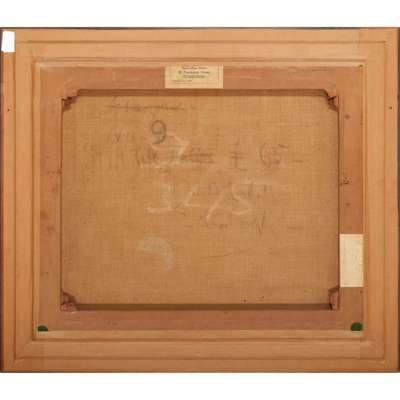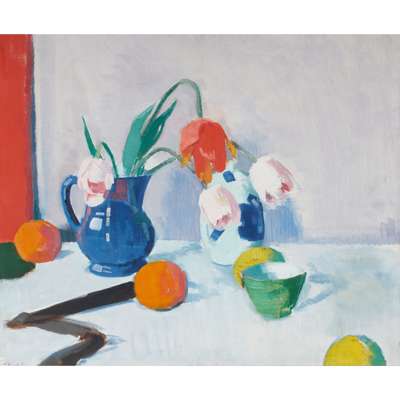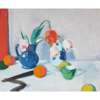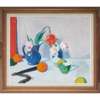
Lot 158

FRANCIS CAMPBELL BOILEAU CADELL R.S.A., R.S.W. (SCOTTISH 1883-1937) ◆
STILL LIFE WITH TULIPS








Scottish Paintings & Sculpture
Auction: Evening Sale: 08 June 2023 | From 18:00
Description
Signed, inscribed verso, oil on canvas
Dimensions
51cm x 61cm (20in x 24in)
Provenance
Acquired in 1943 from Dowell’s Ltd, Edinburgh and thence by descent to the Executors of the Late Mrs Anne Walker
Footnote
F. C. B. Cadell, like his fellow Scottish Colourist and close friend S. J. Peploe, was a master of the still life genre. As seen in Still Life (The Tulip) and Still Life with Tulips, he created images of arresting beauty by way of carefully chosen, arranged and depicted props, including favoured and highly-coloured flowers, fruit and ceramics.
These paintings illustrate the significant development in Cadell’s practice after demobilisation and moving to 6 Ainslie Place in Edinburgh’s Georgian New Town in 1920. Moreover, it was with works from this period that he established his reputation as one of Scotland’s most important artists of the twentieth century. Cadell decorated and furnished his magnificent quarters with aplomb and celebrated its interiors and objects d’art in images characterised by a new firmer technique, flatter rendering of form and use of saturated colour.
As Alice Strang has explained:
This marked change is thought to have been encouraged by Cadell’s new surroundings, by his close collaboration with Peploe immediately after the war, by his interest in the Art Deco movement, and possibly in response to the squalor of the trenches. (Alice Strang, F. C. B. Cadell, National Galleries of Scotland, Edinburgh, 2011, p.40)
Cadell and Peploe had met in Edinburgh by 1909 and these two paintings pay testament to the closeness of their friendship, especially in the early 1920s; Peploe lived a short distance away from Ainslie Place, in India Street. At this time both were drawn to the visual possibilities of tulips, the only flower which continues to grow after being cut. This phenomenon gives rise to the graceful arabesques of their stems which Cadell depicted so deftly. The forms of the flower heads, the layering of their petals and the dense colouring of their leaves also provided an inspiring source of silhouette, colour and mark-making.
Still Life with Tulips bears a price of £65 on its reverse and overflows with Cadell’s confidence and sophistication. He now revels in the reflective glaze and voluptuous qualities of the blue jug, this time set against the lilac walls of the first floor at Ainslie Place. A tablecloth and black fan with winding ribbon (a prop which Peploe also favoured) add to a sense of a cultured lifestyle. Spatial layering is complex and successful, from the cropping of the lemon in the foreground suggesting the wider space existing beyond the confines of the canvas, to the progression of green tea bowl, to lemon to blue and white oriental vase. Tulip heads are seen straight on and in profile, stems and petals overlap each other and their companions, whilst shadow is subtly implied by way of clearly visible brushstrokes. The lighting is soft, the palette combines gentle tones with pure brilliance and each item contributes to an overall sense of balance.








